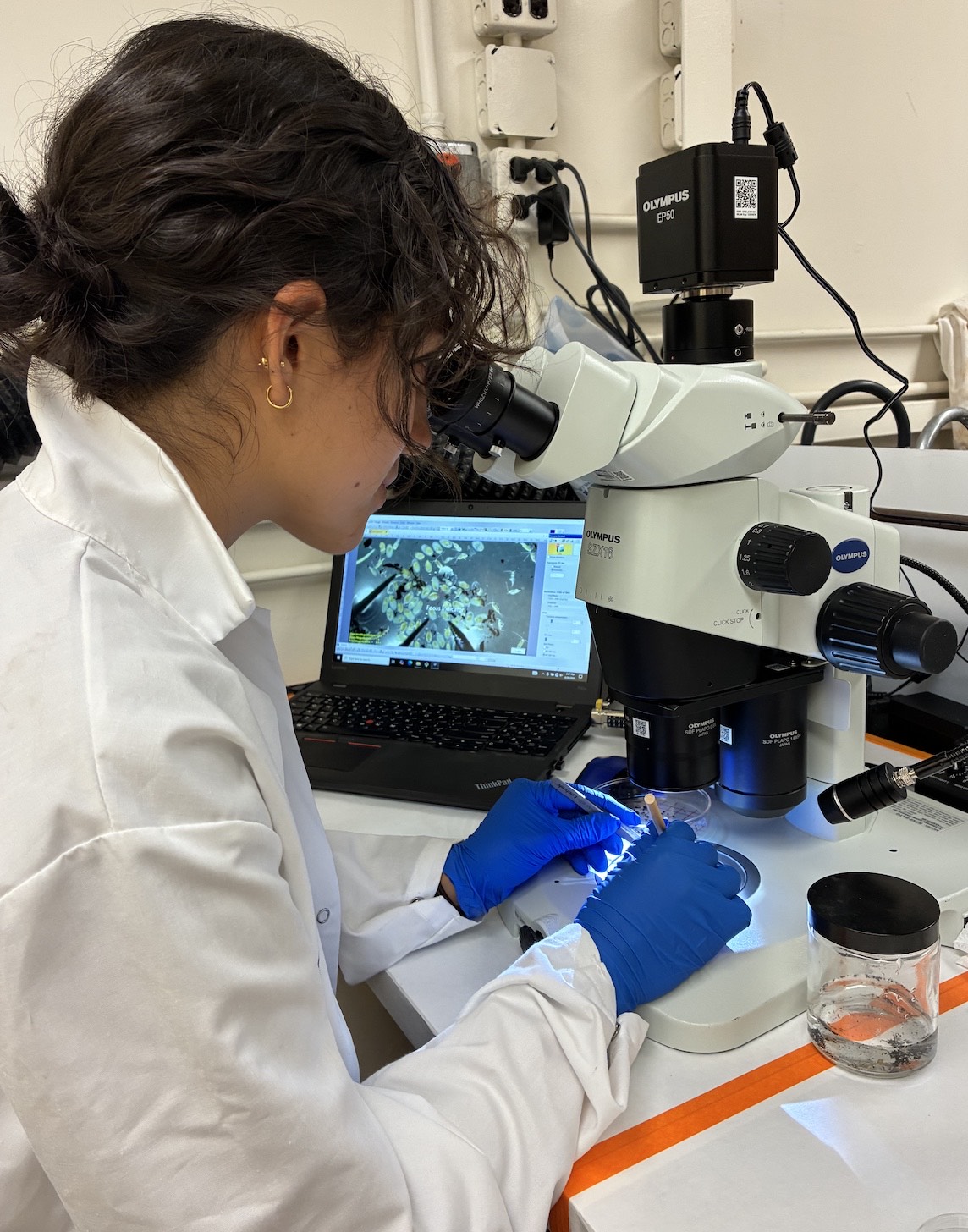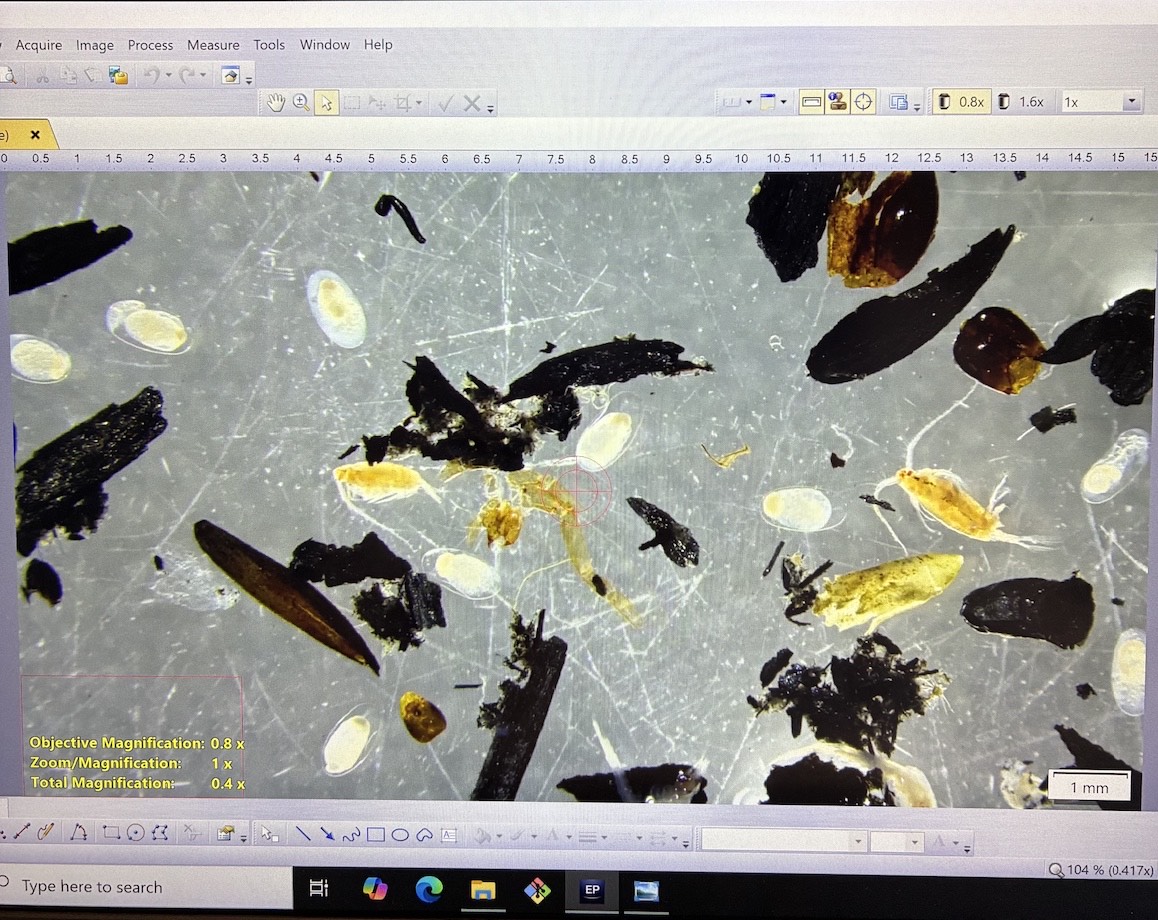Over the past month, I have used ash proxies from models and satellites to analyze how smoke was transported over the ocean during the January 2025 L.A. fires. I learned how different data sources tell us different things regarding aerosol transport– for example, aerosol optical depth (AOD) is often used to track smoke distribution, yet it requires a supplemental “smoke detection mask” in order to separate trends between smoke and other common aerosols (e.g., dust, sea spray, etc). Additionally, model accuracy for unique forcing events like the January L.A. fires is often limited due to coarse spatial resolution and little observational data.
Apart from satellites, I’ve also worked with my lab on developing an ash sorting protocol for the water samples taken during the fire period (fun fact: these samples are part of a 76-year old archive of fisheries monitoring efforts in the California Current Ecosystem). Since these samples contain abundant plankton that inform fisheries, we needed to find a way to carefully tease ash particles from copepods, anchovy eggs, jellies, and more. Apart from refreshing my fine motor skills working under the dissecting microscope, I’ve also practiced my experimental ideation and protocol development skills.
Based on my work looking at remotely-sensed ash proxies and my lab’s work sorting ash particles, I’ve learned that hydrophilicity and other chemical/physical behaviors are important parameters to consider when thinking about how smoke gets transported over the ocean surface layer. Also, once burnt material deposits into the water, we need to consider how particle size, chemical composition and microbial community composition influence the complex interactions between ash and phytoplankton.
I’m excited to continue learning new methods of experimental research throughout this internship! If you have more questions regarding this work, feel free to contact me at ndr2141@barnard.edu.
- NICHOLE RUIZ '26


